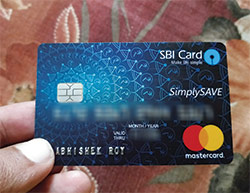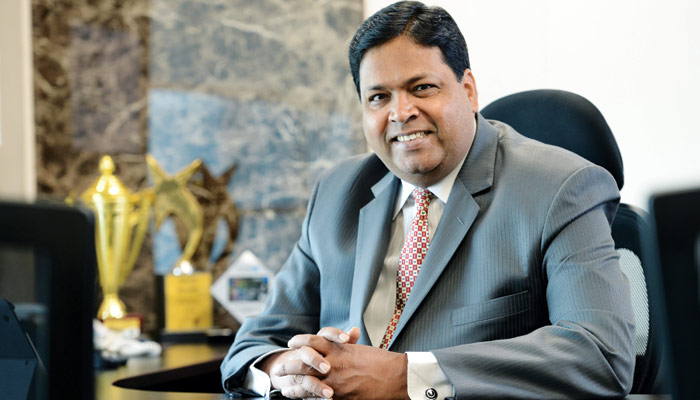In October, India’s second largest credit card issuer, SBI Card, will turn 21- fully matured and ready to enter a new trajectory. Though, it was established as a joint venture between SBI and GE Capital in 1998, SBI Card has always worked as an independent entity without any reliance on its parent bank for the growth, unlike any of its competing credit card issuers.
SBI Card’s journey of over two decades has been quite eventful. The world leader GE group was its early partner, which exited owing to its global strategy to move out of financial services sector. In 2017, SBI and private equity firm The Carlyle Group bought out GE Capital’s stake, making The Carlyle Group a new partner in the journey. At present, SBI Card is a 74:26 joint venture between SBI and The Carlyle Group. Over the years, SBI Card has established itself as a leader in open market card acquisition. It offers customized products that address specific lifestyle needs of the customers, which could be shopping, travel or dining, among others.
SBI Card has also successfully built a strong co-brand card portfolio which has the widest category offerings, industry wide. Though, it has many banking partnerships with various public sector banks under its belt to bring out credit card, it had not yet leveraged the vast customer base of its parent bank, SBI. Recently, to further fuel its growth, SBI Card entered into a tripartite agreement with SBI and TransUnion CIBIL which enabled it to tap SBI customer base.
Last two years have not only seen a period of accelerated growth but have been witness to the implementation of most innovative ideas and out of the box initiatives spearheaded by its MD & CEO, Mr Hardayal Prasad.
Mr Hardayal Prasad has been a part of SBI, for over three decades and has handled several assignments in various locations in India and abroad. In a freewheeling conversation with Krishna Kumar Mishra, he shares the journey of SBI Card, its various recent initiatives and the future plans.
Let’s start with the rationale behind the recent brand makeover?
SBI Card has been into existence for over two decades now and draws its legacy from one of the oldest and most trusted banks – SBI. The company has earned the trust of 8.5 million customers since its inception and has established itself as a pioneering force in the payments industry in India. Despite its glorious heritage, SBI Card has always been very agile in its approach and has been at the forefront of innovation in the payments solutions business.
Our new brand identity and logo reflect this youth focused outlook and are designed to appeal to the millennial generation. The new identity marries the brand`s modern and youth centric approach with its strong legacy of trust and credibility. It is meant to appeal to the modern sensibilities of this new India, while retaining the credibility and heritage of the SBI. This makeover has also seen the change in our mission statement to reflect the ethos of the company. Now, we are a consumer driven digital company.
SBI Card has raised Rs 700 crore. What was the aim and necessity?
We have been growing at a healthy pace. In fact, our Cards-in-Force (CIF) and spends, both, have grown at over 30% YoY in FY19 which is significantly higher than the industry benchmark. To sustain and further fuel this growth, we realized that we needed more funds and decided to take the route of external commercial borrowings.
When you took over you said that the focus will be to leverage the strong customer base of SBI for customer acquisition? What has been the success rate in this?
SBI Card has been a leader in open market acquisition. In 2017, it constituted around 65% of our card sourcing portfolio while SBI Bank customers had only 35% share. As an independent company we never relied on the parent bank for sourcing, unlike the other card issuers. We soon realized that SBI presents a great potential for us to grow our portfolio in an accelerated pace, while simultaneously maintaining a healthy portfolio. With a focus on accelerated yet safe growth, we launched Project Shikhar towards the end of 2017. We entered into a tripartite agreement with SBI and TransUnion CIBIL that enabled us to tap the potential of SBI customer base. Currently, SBI customer base constitute over 50% of our sourcing and has become the biggest sourcing channel for us. One of the most important aspects of our partnership with SBI has been its ability to provide greater penetration in tier 2 and 3 cities with around 20,000 pin codes open for us to grow.
Was this initiative started by you?
The agreement with SBI and TransUnion CIBIL was signed before I joined SBI Card. However, I was fortunate enough to oversee the roll out of the Project Shikhar and taking it further. The teams at SBI Card and SBI have worked rigorously towards the seamless execution and coordination. In fact, we have already successfully completed six phases of the project and are running the seventh phase.
What about all those 6-7 banks that you had tied up?
Our banking partnerships form a significant part of our co-brand portfolio and reflect the trust that our bank partners have bestowed on us for providing credit card services. We have recently launched a card with Allahabad Bank and have just signed MoU with Central Bank of India and UCO Bank too. We now have exclusive partnerships with seven renowned banks for credit card solutions that include, South Indian Bank, Oriental Bank of Commerce, Bank of Maharashtra, Federal Bank, Karur Vysya Bank and Karnataka Bank. Being an independent entity with an in-depth expertise in card payments segment, SBI Card is well suited to cater to the needs of their customers while it also helps us further grow our card base.
How is the response to Project Shikhar?
Project Shikhar has been a tremendous success. In last 19 months, we have been able to increase the share of SBI customers in our sourcing to 50% plus from around 35%. We have added almost two million cards till date under this initiative.
What is your approach towards going digital?
SBI Card has a strong focus on technology and has been making investments on digital innovations and technology-led initiatives. We understand that today’s customers have a dynamic lifestyle. They are looking to avail services digitally and expect brands to make their lives easier through technology. Keeping their requirements in mind, we have been focusing on developing offerings and service platform that further simplifies their lives.
A recent example is integration of our chatbot ILA on our mobile app which has 40 plus self-service features and enables our customers to manage their accounts on-the-go. We have also recently launched Sales 24 which is a front-end sales application. As of now, it is being rolled out to 5000 of our Relationship Executives (REs) and going forward we intend to increase this number to 40,000. We have completely revamped our technology infrastructure to support the paperless card application and issuance and as we increase our outreach of Sales 24 there will be no paper required for card issuance except one page with customer wet signature as mandate by RBI. We are glad to say that we are future ready, far ahead from our competitors in terms of digital push.
Peer to Peer (P2P) is set to grow into a $5 billion industry by 2023. RBI has also proposed giving NBFC status to P2P lending companies. How you plan to respond to that challenge?
It is too early to determine the course of P2P lending in India, however, we believe that credit and payments industry in India is at a very interesting juncture and the entry of different entities will only help expand and improve the digital payments ecosystem. There is enough market and we surely are well geared up to benefit from this growth in the ecosystem. An interesting point we must not forget that in India out of 100 people only two have credit cards. If you look at other markets and compare, in Singapore there are 165 cards for 100 people, Hong Kong 280 cards, in Europe and US you find people having 4-5 cards. So, there surely is room and potential in India that can be leveraged. Moreover, we feel that credit cards have an edge over other lending and payment platforms. A credit card performs dual functions of extending an immediate line of credit along with being a globally accepted payment instrument not just for online transactions but also at retail PoS machines. It is still the preferred mode of payment, especially for large ticket purchases and is fast evolving- transforming from physical card to virtual- keeping up pace with the changing preferences of today’s mobile customers. At SBI Card, we acknowledge this change and have already ramped up our technology platforms and rolled out initiatives based on latest innovations. We are leveraging AI, Machine Learning and Robotics to improve our overall customer experience, which we strongly believe is the key to remain ahead of our competitors.
India is at Stage 3 of demographic transition and millennial are now a key consumer segment. How are you going to cater this Smartphone savvy generation?
India is one of the youngest nations in the world and is expected to have 410 million millennial in its population who will spend $330 billion annually, by 2020. Today, millennial generation in India has emerged as a leading consumer demographic providing a huge potential for our growth.
Currently, our cardholder base has around 45% of users who are under 35, which highlights the spending power of this segment. Recognizing the unique needs and preferences of millennial, we have been the first in the industry to introduce innovative products which meet the needs and aspirations of the young generation, while complementing their dynamic lifestyles. For instance, our SimplyCLICK SBI Card, offers great savings and rewards to the online shopping generation. Taking into cognizance millennials` interests such as travel, entertainment, dining out and aspiration for superior lifestyle privileges combined with strong value, we had also introduced SBI Card PRIME. Going forward, we expect this segment to continue being a strong growth driver for us and for the industry and we will continue to introduce innovative and customized products for this segment. We are also leveraging cutting-edge technology to bring digital transformation in our services so that we are able to cater to them in a better way, ILA chatbot being the latest example.
Can you specify the market share in number of cards and in spends?
We are the second largest credit card issuer in the country with customer base of more than 8.5 million. As mentioned earlier, we have grown at the rate of 30% YoY in terms of CIF as well as spends which is higher than the industry benchmark. SBI Card already holds over 17% market share in both CIF and spends which were at around 15% in early 2018. Currently, our average monthly card spends is INR 10,000 crores.
What is your delinquency rate?
Our delinquency rate is less than 2% which is in line with the industry. It is important to note that while our outstanding portfolio has grown, our delinquency level has remained constant. SBI Card has a robust and comprehensive Risk Management framework subjected to periodic review to ensure a healthy growth of the portfolio.
What is the NPA position?
NPA position in our portfolio is as per industry norms.
There seems to be too much emphasis given to social credit scores. What is your take?
Empowered with advanced technology  such as artificial intelligence tools and data analytics, financial institutions have started looking at more effective ways of assessing credit risk. Social media activity is an indicator of a person’s lifestyle along with their spending patterns and analysis of social media activities of a person can provide wider parameters for assessment. Coupled with traditional methods, it provides a more comprehensive assessment tool to risk profile potential borrowers.
such as artificial intelligence tools and data analytics, financial institutions have started looking at more effective ways of assessing credit risk. Social media activity is an indicator of a person’s lifestyle along with their spending patterns and analysis of social media activities of a person can provide wider parameters for assessment. Coupled with traditional methods, it provides a more comprehensive assessment tool to risk profile potential borrowers.
You recently partnered with Ola. How it works?
Ola Money SBI Credit Card is a latest addition to our robust co-brand card portfolio. It is one of its kind credit card in the mobility segment. Through this card, we aim to address our customers’ evolving mobility spends while providing them with maximum value and unique benefits on their travel spends. Ola Money SBI Card brings together a unique payments experience alongside several best-in-class benefits for users. It provides a completely digital experience to customers as it offers a simplified application process with no joining fees. Ola users are able to apply, view and manage their credit cards directly on the Ola app with a few taps.
Do you think the physical cards will become obsolete?
With the advent of HCE technology, credit cards have evolved and can now reside in a mobile phone. Customers can Tap and Pay at NFC enabled PoS terminals, eliminating the need to carry a physical card. This definitely has enhanced ease and security of transacting as customers need not carry a physical card anymore. However, while the form factor may change, the function of credit cards will remain the same. Besides serving the purpose of payment instrument and immediate liquidity through personal finance, it also brings greater value to customers in the form of various tangible and intangible benefits. At SBI Card, we are fully equipped with HCE technology that will enable cardless payments through virtual cards.
What approach SBI Card is taking to avoid banking frauds?
SBI Card has already converted close to 99% of its portfolio to chip and pin technology (EMV technology), thereby making cards safe from skimming frauds. Additionally, as per RBI guidelines, all domestic transactions on cards are authenticated by either OTP for online or PIN for point of sale transactions. We have 24X7 monitoring of all transactions which is done by our team in tandem with capabilities developed using new-age technologies such as AI. In cases where an unusual transaction is identified on a card, our team reaches out proactively to the customer to verify the authenticity of the transaction. Moreover, in order to sensitize customers on safety aspects of credit card usage SBI Card also runs a regular educational campaign called Prachar to educate customers on the various schemes and techniques employed by fraudsters and how to safeguard against such activities, using communication modes such as SMS, emailers, social media etc.






















